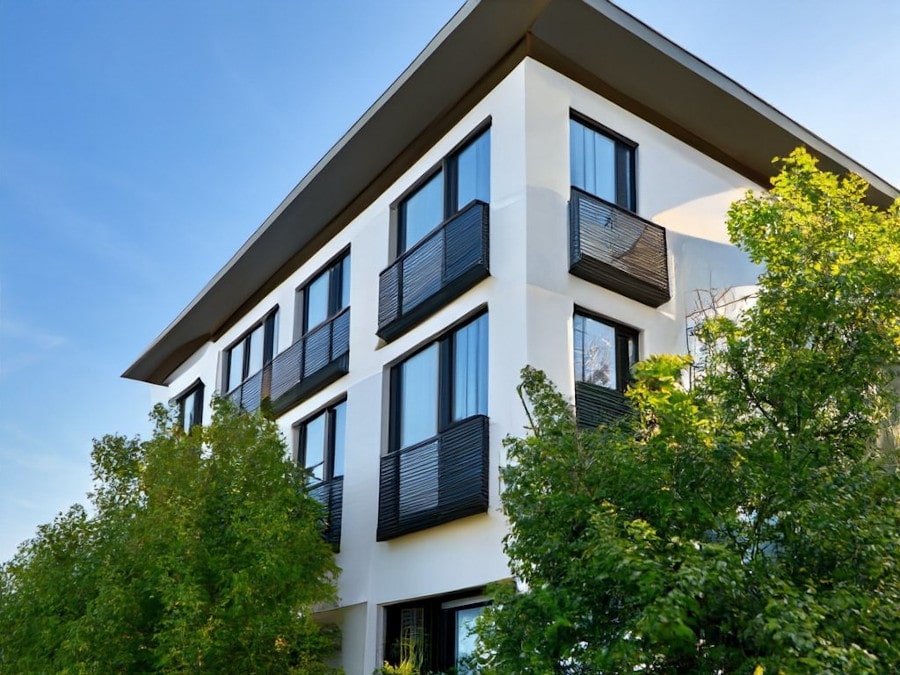Eco-Friendly Windows: Practical Sustainable Solutions for Your Canadian Home

Key Takeaways:
- Upgrading to eco-friendly windows can make a measurable difference in reducing a household’s carbon footprint each year.
- Choosing the right frame and glass material optimizes energy efficiency and indoor comfort.
- Vinyl, wood, and fibreglass offer reliable, energy-efficient, and lower-maintenance options for homes.
- Proper installation and certifications, such as ENERGY STAR®, are critical for reliable long-term performance.
- Long-term cost savings often outweigh the upfront investment, resulting in lower utility bills and potential rebates.
Why Eco-Friendly Windows Matter
Windows do more than frame your view — they are vital components of a home’s energy performance and overall comfort. Conventional windows can be surprisingly inefficient, allowing valuable heat to escape during the colder months and letting unwanted heat in during the summer. This not only drives up heating and cooling costs but also places additional strain on HVAC systems, shortening their lifespan.
Eco-friendly windows , on the other hand, are engineered to minimize energy transfer through advanced glazing, superior insulation, and airtight construction. By maintaining more consistent indoor temperatures they help reduce utility bills, lower your home’s carbon footprint, and contribute to a healthier, more sustainable living environment. Choosing eco-conscious windows is a proactive step toward both financial savings and environmental responsibility.
The Impact of Windows on Energy Efficiency
Windows are more than just openings to the outside — they are essential components of your home’s energy performance. Older or poorly insulated windows can act as thermal bridges, allowing heat to escape in winter and enter in summer. This puts extra strain on your heating and cooling systems.
Consequences of Inefficient Windows
- Higher energy consumption
- Increased utility bills
- Greater carbon footprint
- Reduced overall comfort
The Benefits of Eco-Friendly Windows
Eco-friendly windows are designed to:
- Minimize heat loss during cold months
- Reduce solar heat gain in summer
- Maintain a stable indoor temperature year-round
Choosing the right windows ensures:
- Enhanced comfort during every season
- Lower energy costs
- A more sustainable and environmentally responsible home
Window Frame Materials: Choosing Sustainability
The frame material affects durability, insulation, and eco-friendliness. Here’s a comparison of popular options:
| Frame Material | Eco Friendliness | Insulation | Durability | Maintenance | Notes |
|---|---|---|---|---|---|
| Wood | High | Excellent | Good | Moderate | Natural, renewable, may require regular painting/staining |
| Vinyl | Moderate | Good | Good | Low | Cost-effective, energy-efficient, low-maintenance; Canadian Choice Windows and Doors specializes in vinyl |
| Fiberglass | High | Excellent | Excellent | Low | Very durable and energy-efficient; resistant to warping |
| Aluminum | Low | Poor | Excellent | Low | Lightweight and strong, but it conducts heat, making it less energy-efficient |
Note: Canadian Choice specializes in vinyl windows , striking a balance between cost, energy efficiency, and low maintenance. Recycled materials and sustainable manufacturing practices minimize environmental impact.
We prioritize both advanced energy performance and sustainable practices, ensuring our windows deliver measurable efficiency, durability, and a reduced environmental footprint for homes.” – Helen Sin, Consumer Success Manager.
Eco-Friendly Glass Options
Choosing the correct type of glass is just as important as selecting the frame. Different glass options affect energy efficiency, solar heat gain, and natural light in your home. Modern eco-friendly windows often combine multiple technologies, such as Low-E coatings, double or triple glazing, and argon or krypton gas fills, to optimize insulation and comfort. The table below provides a clear comparison of common glass types and their performance characteristics, helping you make an informed choice.
| Glass Type | Energy Efficiency | Solar Heat Gain | Visible Light Transmission | Notes |
|---|---|---|---|---|
| Double-Pane | Good | Moderate | High | Standard option: reduces heat transfer |
| Triple-Pane | Excellent | Low | Moderate | Provides superior insulation; recommended for colder climates. |
| Low-E | Excellent | Low | High | Coated to reflect infrared energy, improving efficiency |
| Tinted / Reflective | Good | Low | Moderate | Reduces glare and solar heat gain; may slightly darken interior |
| Gas-Filled (Argon/Krypton) | Improves insulation | – | – | Often used between panes to enhance thermal performance. |
Note: Combining the right frame and glass technology ensures maximum energy efficiency, lower utility costs, and a more comfortable home throughout the year.
“Choosing the appropriate glass type is essential for optimizing energy efficiency, controlling solar heat gain, and ensuring optimal natural light. Integrating technologies like Low-E coatings, triple glazing, and inert gas fills allows modern windows to deliver superior thermal performance and comfort.” – Tony Wong, Project Manager .

Additional Factors for Eco-Friendly Windows
Selecting eco-friendly windows involves more than just the frame and glass type. Several additional factors influence performance, sustainability, and overall impact:
1. ENERGY STAR® Certification
Windows with ENERGY STAR® Certification meet rigorous Canadian energy efficiency standards. They are independently tested to ensure minimal heat loss, reduced solar heat gain, and lower overall energy consumption, helping homeowners save on heating and cooling costs.
2. Recycled Materials
Using recycled materials in window frames and components reduces reliance on virgin raw materials, lowers greenhouse gas emissions, and supports a circular economy. Many modern windows incorporate recycled materials, such as vinyl, aluminum, or glass, without compromising durability or performance.
3. Indoor Air Quality
Eco-friendly windows often feature low-VOC (volatile organic compounds) materials and finishes, reducing harmful chemical emissions inside your home. This contributes to healthier indoor air and a safer living environment for families.
4. Sustainable Manufacturing
Manufacturers that prioritize sustainability implement renewable energy sources, water conservation measures, and responsible waste management practices in their production processes. Choosing windows from such companies ensures a lower environmental footprint from the very start.
5. Professional Installation
Even the most advanced windows will underperform if improperly installed. Certified professional installation guarantees airtight sealing, proper insulation, and optimal functionality, maximizing energy efficiency and extending the lifespan of your investment.
Balancing Eco-Friendliness and Cost
| Factor | Benefit |
|---|---|
| Energy Savings | Reduced heating/cooling costs |
| Rebates and Incentives | Provincial/federal programs can lower upfront costs |
| Increased Home Value | Eco-friendly windows make your home more attractive to buyers |
| Environmental Impact | Contributes to a sustainable lifestyle |
Tip: Consider long-term ROI: energy-efficient windows often pay for themselves through lower energy bills and available rebates.
Step-by-Step Guide to Choosing Eco-Friendly Windows
- Assess Your Home’s Needs – Consider climate, orientation, and existing insulation.
- Set Your Priorities – Focus on energy savings, environmental impact, or indoor air quality.
- Research Options – Compare frame materials, glass types, and energy ratings.
- Consult Professionals – Window experts can provide tailored guidance.
- Evaluate Certifications – Look for ENERGY STAR® or other reputable efficiency certifications.
- Consider Installation and Maintenance – Proper installation ensures efficiency.
- Explore Rebates and Incentives – Provincial, federal, and utility programs can reduce costs.
- Choose a Reputable Manufacturer – Ensure quality, durability, and sustainable production.
Adopt Sustainable Practices with Eco-Friendly Windows
Investing in eco-friendly windows reduces energy costs, enhances indoor comfort, and contributes to a greener future. By carefully selecting frame materials, glass types, and ensuring proper installation, homeowners make a measurable environmental impact.
For more guidance, check Natural Resources Canada’s energy-efficient window guide.
Contact Canadian Choice Windows and Doors today to explore eco-friendly window options and take the first step toward a more energy-efficient, sustainable home.
Frequently Asked Questions
Q: What makes a window energy efficient?
A: Insulated glass, Low-E coatings, and frames designed with thermal breaks reduce heat transfer.
Q: Are vinyl windows eco-friendly?
A: Vinyl windows are energy-efficient and often made from recycled materials, though end-of-life recycling is limited.
Q: How do eco-friendly windows improve indoor air quality?
A: They minimize VOCs and harmful chemicals found in traditional window materials.
Q: What is the role of gas fills in energy-efficient windows?
A: Argon or krypton gas between panes enhances insulation and reduces energy loss without adding weight.
Q: Is it worth replacing old windows with eco-friendly options?
A: Yes. New energy-efficient windows can lower energy bills, improve comfort, and add long-term value to your home while supporting sustainable living.
1000’s of Colours & Textured Finishes
Transform your home from ordinary to extraordinary with our new coloured and non-glare textured finishes. Available in a wide array of colours as well as custom matched colours for your very own personalized design.
Our Most Popular Replacement Window Colours:










